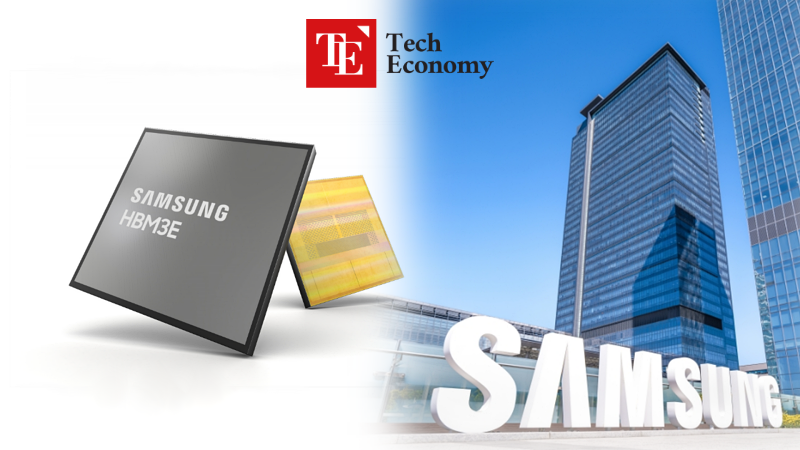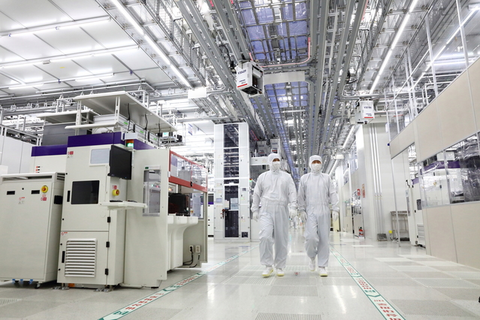Samsung Electronics Joins Hands with Broadcom for an HBM Counteroffensive — Will It Reshape the AI Semiconductor Landscape?
Input
Modified
A Flexible Approach Toward Latecomers The Race for In-House AI Chip Development Heats Up HBM4 Winner Expected to Reshape the Memory Market Landscape

In the rapidly evolving landscape of artificial intelligence (AI) hardware, memory technologies like High Bandwidth Memory (HBM) are becoming a decisive battleground. And at the heart of this competition, Samsung Electronics is repositioning itself as a formidable contender. After losing ground in the HBM market to SK Hynix and Micron, Samsung is now reentering the scene through strategic alliances with Broadcom and AMD—an indirect yet potentially potent counteroffensive as it tries to break back into NVIDIA’s supply chain.
While NVIDIA remains dominant and publicly dismissive of these moves, the combination of growing AI workloads, geopolitical pressures, and technological innovation is challenging the status quo. Samsung’s quiet but methodical comeback—marked by advances in HBM3E production and preparations for next-generation HBM4—is sparking speculation across the semiconductor industry: Could this be the move that tilts the AI memory market's balance of power?
Laying the Groundwork for Market Comeback
Samsung’s resurgence began taking tangible form in June 2025, when the company finalized preparations to mass-produce its HBM3E 8-layer memory for Broadcom. This milestone comes just three months after passing Broadcom’s qualification tests in March—an unusually swift progression in a sector where validation and certification often stretch over several quarters. This win was followed closely by another major announcement: Samsung had also secured a supply of its 12-layer HBM3E to AMD, a rising player in AI accelerators.
These products aren’t just incremental improvements—they’re technological statements. The 12-layer HBM3E module developed by Samsung stacks twelve 24 GB DRAM chips using Through-Silicon Via (TSV) technology, enabling a massive 36 GB memory capacity. It boasts a peak bandwidth of up to 1,280GB per second and delivers up to 10 Gbps through 1,024 I/O channels. This level of performance is critical for accelerating the vast computations required by AI models, especially large language models (LLMs) and generative AI tools that now dominate enterprise and cloud computing strategies.
With these advances, Samsung is clearly moving to diversify away from its historical reliance on NVIDIA, which remains the largest consumer of HBM. Instead, it’s forging new inroads with second-tier but fast-rising players like Broadcom and AMD. Market analysts widely interpret these moves as a well-calculated shift, not just a fallback, but a strategic reorientation toward a more balanced and resilient customer base.
According to TrendForce data, SK Hynix controlled 60% of the HBM3E market as of last year, followed by Micron at 25%, while Samsung lagged behind at 15%. But this could soon change. As one industry insider noted, although Samsung had to overcome early challenges such as heat dissipation and power efficiency in HBM prototypes, the company is steadily amassing certifications. “Once it clears the final validation rounds in Q3,” the source said, “Samsung could reenter key customer supply chains before the year ends.”
From a broader perspective, Samsung’s current play is being viewed as a subtle but effective “flanking attack”—not a frontal assault on SK Hynix or NVIDIA’s core markets, but a disruptive maneuver that could unsettle the current equilibrium in AI memory supply.
NVIDIA’s Confidence Amid Ecosystem Superiority
Despite these developments, NVIDIA maintains a posture of calm confidence. The GPU titan has long dominated the AI accelerator space and is backed by a robust ecosystem of software, partnerships, and silicon leadership. CEO Jensen Huang, in a recent session at the VivaTech conference in Paris, downplayed efforts by competitors to develop their own chips, stating bluntly, “Most companies will eventually abandon their in-house chip projects. If it were easy, why would I be working this hard?”
But beneath NVIDIA’s composed exterior lies a flicker of unease. Industry watchers note that while AMD and Broadcom may not pose immediate existential threats, the broader trends toward diversified AI compute demand and expanded HBM supplier pools are undeniable. If Samsung’s forthcoming HBM4—already in an advanced development stage—hits its targets, NVIDIA’s tight-knit supply ecosystem could face pressure.
There’s another layer to Huang’s guarded tone: China. Huang has grown increasingly vocal about Chinese advances in semiconductor design and manufacturing. At VivaTech, he cited Huawei—despite its placement on the U.S. Department of Commerce’s Entity List, as an example of how U.S. export controls may be backfiring by accelerating China’s technological self-reliance. “Chinese competitors have evolved,” he warned, adding that Huawei has become “remarkably strong.”
These remarks suggest that NVIDIA’s strategic calculus isn’t limited to market players like AMD or Samsung; it includes geopolitical variables such as Washington’s export policies and Beijing’s push for tech sovereignty. In this context, Samsung’s rise isn't just a corporate story; it’s part of a larger realignment of global semiconductor supply chains.

Samsung Ramps Up for HBM4 and a New Power Balance
Samsung’s ambitions don’t stop at HBM3E. The company is already making bold progress toward HBM4, the next frontier in high-speed memory. The foundation of this effort lies in its sixth-generation DRAM, which reportedly saw its production yield jump to around 40%—a remarkable leap from near-zero just months earlier. This development positions Samsung for potential mass production of HBM4 by the end of the year, a timeline that could significantly accelerate its reentry into top-tier AI supply networks.
HBM4 isn’t just an incremental step—it represents a paradigm shift. Compared to HBM3E, HBM4 is expected to nearly double bandwidth, dramatically improve data transfer per watt, and enhance overall computational efficiency. In the context of LLMs and hyperscale AI computing, these enhancements translate into faster inference times, greater server density, and better energy performance—all essential for keeping pace with AI’s breakneck expansion.
If Samsung succeeds in signing HBM4 supply deals with Broadcom or AMD, the SK Hynix-centered supply chain could face meaningful disruption. While SK Hynix maintains an edge, having already provided HBM4 samples to NVIDIA, it now faces real competition from a reinvigorated Samsung. Notably, Jeon Young-Hyun, Vice Chairman and Head of Samsung’s DS Division, has openly positioned HBM4 as the company’s “decisive counterattack card”—a signal that Samsung is aiming not just for technical parity, but strategic superiority.
In the final analysis, HBM4 is more than just a memory product; it’s a strategic fulcrum that could determine the trajectory of the entire AI hardware ecosystem. With AI demand surging and memory requirements scaling in tandem, the stakes have never been higher. The prevailing industry view is clear: whichever company first secures reliable mass production of HBM4 and lands key customers will reshape the future of AI computing.
Samsung now finds itself at that threshold. Whether it seizes this moment and regains leadership will not only determine its own future, but may also tilt the balance in the ever-intensifying race to power the AI age.





















